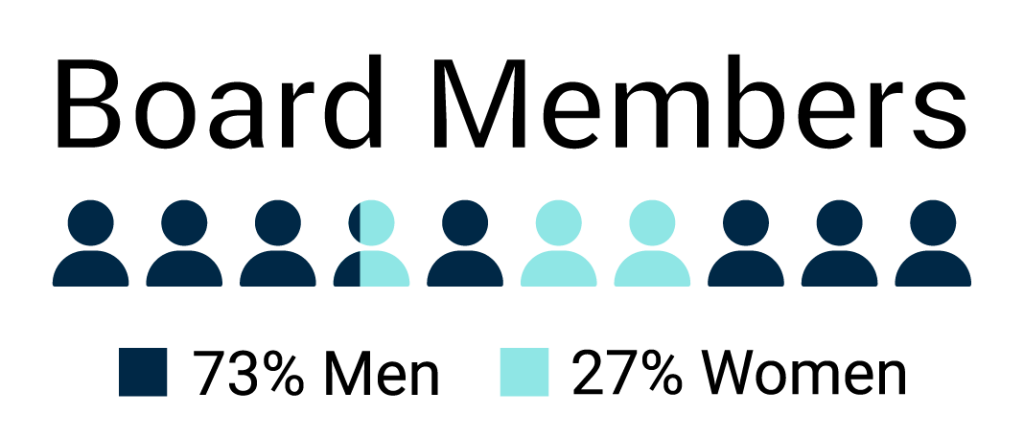Next Topic
Select SDGs to find out how we are taking action in support of the UN Substinable Development Goals
2023 ISRAEL CHEMICALS LTD. | ALL RIGHTS RESERVED

(see further details here)
| units | 2019 | 2020 | 2021 | |
|---|---|---|---|---|
| Sales | $ millions | 5,271 | 5,043 | 6,955 |
| Operating income | $ millions | 756 | 202 | 2,611 |
| Adjusted operating income | $ millions | 760 | 509 | 1,194 |
| Total adjusted net income - shareholders of the Company | $ millions | 479 | 258 | 824 |
| Cash Flow from Operating Activities | $ millions | 992 | 804 | 1,065 |
(see further details here)
(see further details here)
| units | 2018 | 2019 | 2020 | 2021 | ||
|---|---|---|---|---|---|---|
| Energy | Total energy use | GJ (millions) | 35.3 | 33.6 | 33.8 | 34 |
| Direct | GJ (millions) | 29.2 | 29.4 | 29.1 | 29.1 | |
| Indirect | GJ (millions) | 6.05 | 4.2 | 4.7 | 4.8 |
(see further details here)
| units | 2018* | 2019 | 2020 | 2021* | ||
|---|---|---|---|---|---|---|
| GHG | Total Scope 1+2 | CO2e tonnes (thousands) | 2,940 | 2,649 | 2,507 | 2,538 |
| Scope 1 | CO2e tonnes (thousands) | 2,220 | 2,233 | 2,140 | 2,158 | |
| Scope 2 (market) | CO2e tonnes (thousands) | 720 | 416 | 367 | 380 |
* An independent assurance process was performed by an external expert, which included verification and validation in accorded with ISO 14064-3 standard for greenhouse gas statements.
** ICL expects to further refine its Scope 3 emissions data collection procedures over time and to include data on Scope 3 emissions in future Disclosures.
(see further details here)
| 2018 | 2019 | 2020 | 2021 | |||
|---|---|---|---|---|---|---|
| Air | NOx | tonnes (thousands) | 1.5 | 1.4 | 1.5 | 1.3 |
| SOx | tonnes (thousands) | 4 | 2.9 | 2.5 | 2.5 | |
| PM | tonnes (thousands) | 0.94 | 0.58 | 0.53 | 0.47 | |
| VOC | tonnes (thousands) | 0.068 | 0.074 | 0.088 | 0.086 | |
| NH3 | tonnes (thousands) | 0.087 | 0.032 | 0.008 | 0.011 |
(see further details here)
| 2018 | 2019 | 2020 | 2021 | |||
|---|---|---|---|---|---|---|
| Water | Total water use | m3 (millions) | 72.2 | 71.9 | 71 | 68.6 |
| Fresh water | m3 (millions) | 19.2 | 18.5 | 18.6 | 20.9 | |
| Non-Fresh water | m3 (millions) | 53 | 53.4 | 52.4 | 47.7 | |
| Wastewater discharge | m3 (millions) | 21.7 | 21.4 | 21 | 20.7 |
(see further details here)
| 2018 | 2019 | 2020 | 2021 | |||
|---|---|---|---|---|---|---|
| Waste | Total Waste | tonnes (thousands) | 62.3 | 65.2 | 67.5 | 59.2 |
| Total Haz Waste | tonnes (thousands) | 25.8 | 28.4 | 36.5 | 29.5 | |
| Total Non-Haz waste | tonnes (thousands) | 36.5 | 36.8 | 31 | 29.7 | |
| Recycling/Reuse - Haz Waste | % | 30% | 25% | 23% | 19% | |
| Landfill - Haz Waste | % | 62% | 66% | 66% | 41% | |
| Inciniration - Haz Waste | % | 8% | 10% | 11% | 40% | |
| Recycling/Reuse - Non-Haz Waste | % | 48% | 48% | 61% | 35% | |
| Landfill - Non-Haz Waste | % | 51% | 49% | 39% | 65% | |
| Inciniration - Non-Haz Waste | % | 1% | 2% | 0% | 0% |
(see further details here)
To ensure its goal of promoting gender equality, ICL is implementing and monitoring the following diversity KPI’s, and has set the following quantitative diversity goals, to be reached by 2024. These KPI’s show improvement since 2019, indicating that ICL’s efforts to promote gender equality are providing beneficial results.
| End of 2021 | 2024 Target | |
|---|---|---|
| Women in the Overall Workforce | 19% | 20% |
| Women in Senior Management | 20% | 25% |
| Women in ICL Board of Directors | 27% | 25% |

(see further details here)
During 2021, total working hours of ICL employees reached approximately 19.5 million. The total number of accidents decreased by 3.5% in 2021 compared to 2020. RTO (Right to Operate index) is an indicator that ICL has developed in order to measure environmental non-compliance.
Calculations of IR (Injury Rate) and SI (Severity Index) rates are conducted based on a 200,000 factor, multiplied by total lost employee workdays and absent days. The SI methodology is based on an assumption that the number of absent days correlates with the severity of the safety event.
| units | 2019 | 2020 | 2021 | |
|---|---|---|---|---|
| RTO | # | 103 | 101 | 94 |
| IR Rate - Direct employees | # | 0.5 | 0.65 | 0.73 |
| SI Rate - Direct employees | # | 22.94 | 30.63 | 22.02 |
| Accidents – Direct Employees | # | 50 | 63 | 71 |
| Accidents – Contractor Employees | # | 26 | 51 | 39 |
| Fatalities – Direct Employees | # | 0 | 0 | 0 |
| Fatalities – Contractor Employees | # | 1 | 2 | 0 |
| Total Accidents | # | 77 | 116 | 110 |
| *Severe Transportation Incidents | # | na | 0 | 0 |
* Significant incidents occurred during the transport of materials to or from ICL sites. According to SASB RT-CH-540a.2
ICL focuses on proactive leading indicators in order to create a strong safety culture and prevent EHS related events from occurring. Several crisis and emergency drills are performed annually in each site to ensure personnel preparedness. EHS external audits and other assessments are performed in accordance with EU Seveso Directive, OSHA PSM regulation, UK HSE control of major accidents and other leading frameworks.
| 2021 Planned | 2021 Actual | Actual vs Planned | |
|---|---|---|---|
| PSM Risk Assessment | 198 | 226 | 114% |
| EHS Audits | 375 | 392 | 104% |
| Job Safety Analysis (JSA) | 667 | 930 | 139% |
| Emergency drills | 267 | 636 | 238% |
| Crises drills | 55 | 66 | 120% |
ICL endorses and follows a variety of initiatives and quality management systems to improve and streamline processes and performance, as well as to reduce risks. The great majority of ICL’s production facilities are certified with ISO standards or with equivalent standards for environmental management, safety and quality. All major energy consuming sites are certified with the energy ISO standard. Food and pharma production sites are certified with GMP/Q7 or other designated standards for the food and pharma industries.
| 2019 | 2020 | 2021 | ||
|---|---|---|---|---|
| ISO 14001 or an equivalent standard for environmental management | % of production sites certified | 93% | 93% | 84% |
| OHSAS 18001/ISO45001 or an equivalent standard for safety | % of production sites certified | 91% | 91% | 81% |
| ISO 9001 or an equivalent standard for quality | % of production sites certified | 95% | 94% | 94% |
| Energy management - ISO 50001 | % of energy consumption | 84% | 90% | 90% |
(see further details here)
ICL’s monetary donations in 2021 amounted to approximately $8 million (including the amount invested in the Visitor Center). In addition, during 2021, ICL contributed, at the Company’s expense, about 12,755 hours of volunteer work of its employees. This amount does not include 12,680 hours of volunteer work after working hours, which was encouraged, organized, and logistically facilitated by ICL.
| Category | 2021 |
|---|---|
| Education | $1,700,000 |
| Local Communities & Philanthropy | $1,400,000 |
| Food Security | $250,000 |
| Health Institutions | $660,000 |
| Disaster relief & COVID-19 Support | $185,000 |
*3.8 million USD was invested in the Sdom Visitors Center
(see further details here)
IA refers to Ethical standards aspects in audits conducted annually at ICL sites and as part of dedicated reviews of processes, such as Sales & Marketing, Procurement, Contractors, and once every 3 years conducts a dedicated audit on different Ethical standards (e.g. Code of Ethics, Anti Bribery and Corruption, Anti-Harassment & Discrimination, etc.).
| Board & Governance Information | |
|---|---|
| Total Number of Directors | 11 |
| Number of Non-Executive Directors on Board | 10 |
| Number of External Directors* | 2 |
| Number of Independent Directors** | 5 |
| Separate Chair and CEO | Yes |
| Board Meetings Held in 2021 | 18 |
| Renewal & Diversity | |
| Annual Election of Directors | Yes |
| Average Age of Directors | 59.5 |
| Women Board Members | 27% |
* The definition of “external directors” is pursuant to Israel’s Companies Law, 5759-1999 (the “Companies Law”).
** Six directors are independent directors under the rules applicable to U.S companies listed on the NYSE. Five are independent according to Israeli regulations.
For more details on ICL’s Board see ICL’s 2021 Annual Report and Articles of Association.


